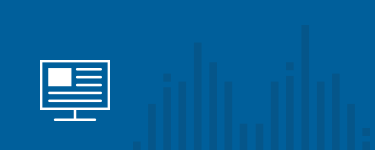Sample Chart of Accounts for an Equipment Rental Company
To grow a successful rental business, it is crucial to thoroughly track your revenue and stay on top of your expenditures. A well-structured Chart of Accounts (COA) is a foundational tool for this type of financial management. Whether you are a brand-new rental business just starting out or fine-tuning the processes you already have in place, a COA tailored to your needs will help you organize and manage your financial data effectively. (And, if you ever decide to sell your rental business? It’s an excellent tool for providing concise historical information during the due diligence process.)
What is a Chart of Accounts?
With your Chart of Accounts, you can categorize each expenditure in your general ledger. Well-structured COAs let you carefully reflect on and organize your financial transactions, gaining a detailed understanding of where each dollar is going. You can then make smarter business decisions and simplify your financial reports.
Sample Chart of Accounts for a Rental Company
Some major Chart of Account categories you could use for your rental business might include:
Assets – The resources you own, including your rental equipment, delivery vehicles, parts and merchandise inventory, accounts receivable, petty cash, checking/savings accounts, tools, and prepaid insurance.
Liabilities – The items your business owes money for. Examples include accounts payable, credit card payments, employee wages, loans payable (i.e., equipment finance agreements), customer deposits, and payroll liabilities.
In some cases, you may want to consider breaking up your liabilities into short-term and long-term liabilities. Short-term liabilities include payroll obligations, notes payable, and accounts payable, while longer-term liabilities include items such as mortgage loans and any bonds you may own.
Equity – Larger, publicly owned rental businesses may need to track stock and retained earnings for stockholders. However, this may not be a necessary account for smaller, independent rental companies.
Operating Revenue – This is the revenue you collect from your business operations, such as delivery charges, equipment rental income, damage/recovery fees, and sales of equipment/assets.
Cost of Goods Sold (COGS) – This category tracks costs related to rental services. These services can include equipment repairs for your rental fleet, maintenance supplies, fuel and lubricants, and subcontracted services. It’s important to note that your rental equipment inventory does NOT fall under this category, but rather your assets as discussed above.
Costs of goods sold can also represent the cost of sales of equipment, parts, and merchandise. When a business sells these assets – whether it is construction machinery, wholesale, warehouse or manufacturing tools, the COGS can include freight or shipping costs, direct labor, and assembly expenses in addition to the purchase price of the assets themselves.
Expenses – This is the category that your general business expenses fall into. These expenses can include anything from the rent of your office/warehouse space to your office supplies, your salaries/ wages, and your software subscriptions.
For even more granular reporting, you may consider breaking down your expenses by department. For instance, you could create one account for marketing expenses; one account for HR expenses; one account for IT expenses; etc.

Additional Tips for Optimizing Your Chart of Accounts
While the “perfect” structure for a chart of accounts will look a bit different for every rental business, a few general recommendations include:
- Leave Room in Your Numbering System: When you assign numbers to your accounts, consider leaving room for future additions as your business grows. For example: if you’re using account numbers 100000 through 149999 for current assets, don’t assign account numbers 150000 through 199999 for your next category. Start your next category off at 200000 to make future additions within the current asset category as minimally disruptive as possible.
- Keep it Simple: To avoid disorganization, only include accounts you actually use. Leaving space for future additions if and when they are needed lets you make changes if you have a strong business case to do so, without making your chart of accounts unnecessarily complicated to start.
- Review Regularly: Assess your COA annually or when making major changes to your business model to keep the clutter and chaos to a minimum. However, don’t delete or merge accounts until the end of the year – otherwise, you may encounter additional challenges during tax season.
- Get Input from Rental Industry Experts: Instead of creating a generic COA, structure your accounts in a way that will support current operations and future growth. A well-organized COA, managed in the right accounting software lets you stay on top of costs, increase profitability, and scale operations efficiently. Let a team of rental experts, that has decades of experience, teach you the industry’s proven best practices in a way that will keep you developing with the times.
Ready for a faster, more efficient approach to managing your accounting needs?
Contact InTempo for an in-depth look at our rental software solutions, including a fully integrated module for managing your Chart of Accounts and General Ledger.
 Arielle Cox
Arielle Cox